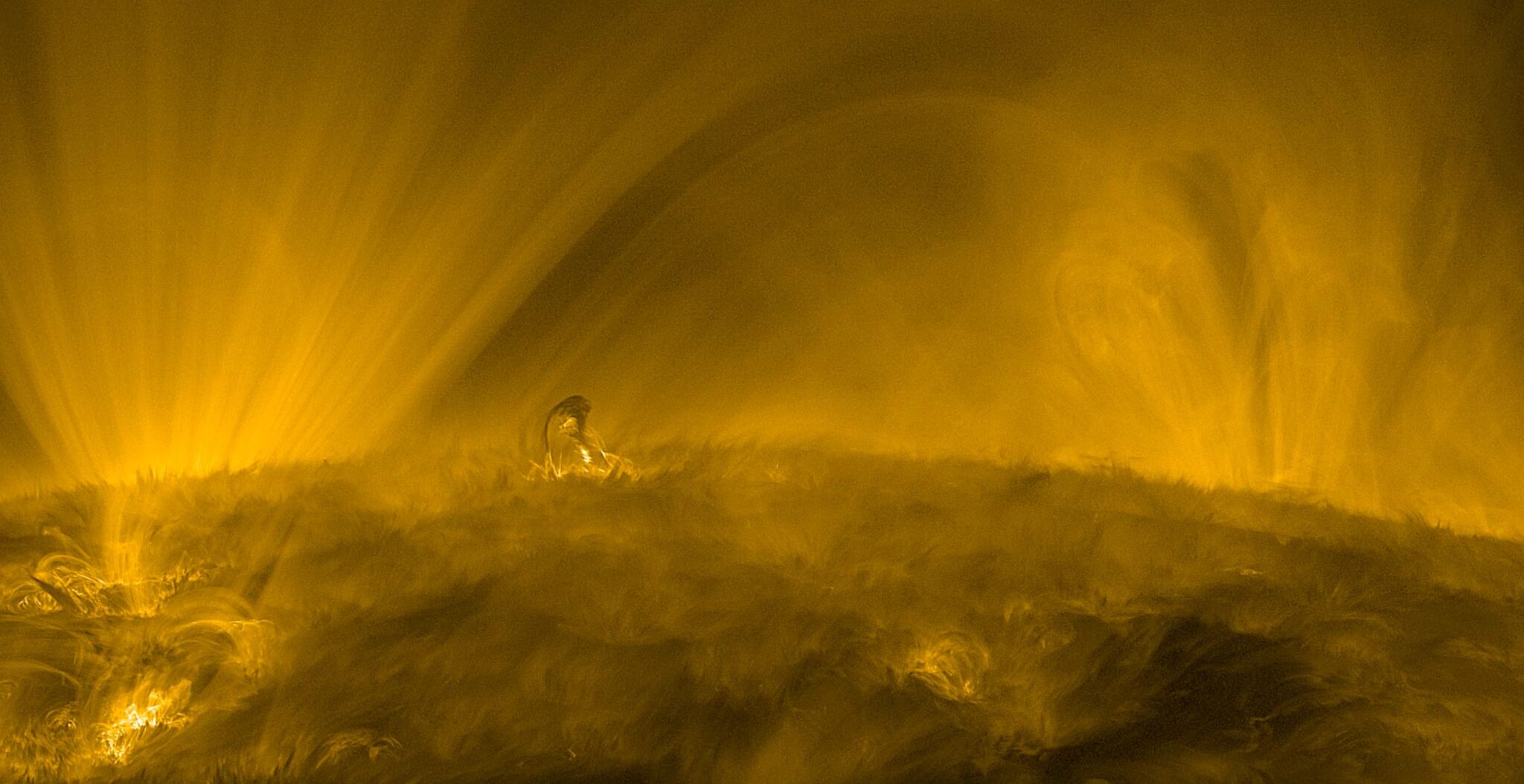The European Space Agency (ESA) has released a new video made by the Solar Orbiter spacecraft, which allows us to take a close look at the corona of the Sun in detail. The video shows the transition of the lower layers of the Sun’s atmosphere to the outer corona, which is much hotter.
The ESA describes the hair-like structure of the lower atmosphere as “fluffy”, although it has little in common with real hair: it consists of a charged gas (plasma), and the bright areas that look white in the video have a temperature of about a million degrees Celsius.
Although the video has only been posted today, it was actually filmed last year.
“This video was recorded on 27 September 2023 by the Extreme Ultraviolet Imager (EUI) instrument on Solar Orbiter. At the time, the spacecraft was at roughly a third of the Earth’s distance from the Sun, heading for a closest approach of 43 million km on 7 October,” the ESA explains.
There are several places in the 47-second video that are worth paying attention to. For example, in the lower left corner there is an excellent example of the so–called coronal ‘moss’, which is a lace structure created by plasma. This feature is usually observed around the base of large coronal loops that are too hot and too weak to be seen without special instruments.

In the direction of the solar horizon, there are so-called spicules that rise to the chromosphere of the Sun and can reach 10,000 km in height.
At the 22nd second of the video, a small eruption can be seen in the center of the frame. It may look small in the video, but this single explosion is larger than the Earth. Finally, after 30 seconds, the so-called coronal rain is noticeable in the center left of the frame, which is “cold” by solar standards – less than 10 thousand degrees Celsius. ESA claims that it consists of higher density plasma clumps that fall on the Sun under the influence of its gravity.
September 27 was an eventful day for observing the Sun. On the same day, NASA’s Parker probe approached the Sun at a very close distance of 7.26 million km and measured particles and the magnetic field in the solar corona, as well as measured the solar wind.
Earlier, we reported on how the Solar Orbiter sent an amazing video of approaching the Sun.
According to esa.int
Follow us on Twitter to get the most interesting space news in time
https://twitter.com/ust_magazine


